- The Ram 1500 ditches its V8 for a turbocharged straight-six available in two output levels.
- The Ford has updated technology and styling, but no new powertrains.
- This gives Ford the edge on towing and payload capacity, but the Ram leads on performance.
2024 Ford F-150 vs. 2025 Ram 1500: All Work, All Play
Newly refreshed full-size pickups go head to head
For as many full-size pickup trucks as there are on American roads, there actually aren't that many options to choose from. So when two of them come up for big refreshes around the same time, we take notice. Which brings us to the 2024 Ford F-150 and 2025 Ram 1500, both of which were heavily refreshed this year.
For this test, we pitted the Ford F-150 King Ranch with its optional hybrid powertrain against the Ram 1500 Tungsten, a new top-of-the-line trim level that includes the high-output version of the company's new straight-six turbocharged engine. Which truck takes the cake? Let's hit our test track.
Driving impressions
The Ford's hybrid powertrain that we have in our long-term F-150, making 430 horsepower and 570 lb-ft of torque. However, as part of the 2024 model year refresh, Ford made the hybrid a no-cost option — you'll pay the same as if you got the gas-only EcoBoost 3.5-liter V6. So you're basically getting the hybrid system and its better fuel economy for free. Win-win.
Ram offers its 3.0-liter Hurricane straight-six in two power levels, and the one tested here makes 540 hp and 521 lb-ft of torque. You can't get a Ram 1500 with a V8 engine anymore, but based on our test results, that doesn't seem to matter. At our test track, the Tungsten put up a very impressive 0-to-60-mph time of just 4.7 seconds, well ahead of the Ford's 5.9-second run.
However, the F-150 struck back in the opposite direction, with a shorter stopping distance from 60 to 0 mph (128 feet vs. 135 feet). The F-150 also had better pedal feel, allowing for more confident stopping. Ford did a great job tuning the braking system in the F-150 Hybrid; the switch between regenerative and mechanical braking happened seamlessly.
On the road, the trucks drove largely the same; Ford's really upped the F-150's comfort factor. All things considered, it's really a draw between the two trucks. In our final rating, the pickups tied in this section.
- Ford F-150: 8.0
- Ram 1500: 8.0
Technology
For us, technology doesn't just refer to screens inside a vehicle's cabin — it includes safety features and driving aids as well. Excitingly, both of these trucks have partial hands-free driving systems: Ford has BlueCruise and Ram has a new system that it just refers to as "hands-free driving assist." These systems are very similar. Both rely on about 150,000 miles of premapped highways, and they require the driver to be watching the road. The systems turn on automatically when you're on one of these premapped highways, but you don't have to use them if you don't want to.
Even though this is Ram's first attempt at such a system, we preferred it to BlueCruise for two main reasons. First, Ram's tech did a better job at staying on, without the multiple deactivations we got in the Ford, and its lane keeping and lane centering sensors seemed to be better calibrated. On top of that, Ram's tech is considerably cheaper up front, as it comes with three free years of use before requiring a subscription (amount TBD). Ford gives you a 90-day trial, then it costs $800 a year, or $2,100 for three years.
Generally speaking, though, Ford's in-cabin experience was far superior. All trims of the F-150 now feature a 12-inch touchscreen and the software is responsive and easy to use. Though the top trims of the Ram feature a larger, vertically oriented 14.5-inch touchscreen, ours was a laggy mess, which became a real problem because Ram forces you to use the screen for certain seat adjustments and climate controls. Both trucks have wireless connectivity for Android Auto and Apple CarPlay, but for some reason in the Ram, if you use Android Auto, it only takes up a tiny portion of the screen.
In the end, the slightly better usability tipped the scales toward the Ford, even if Ram's on-road driving assistant is nicer to live with.
- Ford F-150: 8.5
- Ram 1500: 8.0
Interior and comfort
These categories are separated in our ratings, but we decided to combine them here. Ram still makes the best full-size pickup truck interiors by a good margin, with an edge on materials, design and overall refinement. Our Tungsten test truck in particular, with its indigo and sea salt interior, could rival the cabins of luxury SUVs. The Ram also had much better ride quality thanks to its independent rear suspension and better noise insulation.
Though the Ford doesn't reach the same heights with the F-150's interiors, the truck's lower trim levels are better equipped and offer a few more features than an equivalent Ram. And since most folks won't be buying the tippity-top trims of these trucks, Ford's nicer-specced volume models will be appreciated by more people. The F-150 also has a few fun interior tricks, like the available fold-out center console top that can create a flat table for use between the front seats.
- Ford F-150: 8.5
- Ram 1500: 8.5
Storage, payload and towing
This is a large category for trucks, covering interior storage in addition to payload and towing. The Ram's front storage bin is a highlight, with a movable partition in the center for the cupholders, allowing you to create a large space either in front or behind that can fit a small bag or purse. But the Ford's rear storage is much better, with a larger bin below its seats that's lockable. And if you don't need the bin, it will collapse into the floor to give you a big, flat cargo area that the Ram can't match.
Both trucks utilize a good amount of technology to make towing easier, but Ford's setup feels more polished. It has Pro Trailer Hitch Assist that will automatically back up the truck to line up with the trailer hitch, and it kind of feels like a targeting computer from Star Wars. Each truck has a knob to help with backing up while towing a trailer, but the setup process is much easier in the Ram, where you just have to attach the trailer and drive it around for a bit so the weight/length are automatically detected. The Ford system requires you to attach stickers to the trailer and find a large parking lot to do some maneuvers, though once it's set, it's more intuitive to use with better camera views.
On the road, the Ford felt more confident while towing thanks to its more conventional truck suspension. The Ram's air suspension does use auto-leveling, but we couldn't really sense the weight at the rear end, and it felt bouncy at times. We really did enjoy the Ram's powertrain while towing; getting up to speed required what felt like minimal exertion. But the F-150's setup was really nice too. The Ford has higher max payload (2,445 pounds vs. 2,370 pounds) and towing (13,500 pounds vs. 11,570 pounds) specs, too.
- Ford F-150: 8.5
- Ram 1500: 8.0
Overall rating
Bad news: It's a tie. But while that might feel unsatisfying, it speaks to the different strengths offered by these two trucks. The Ram's interior refinement and elevated driving experience, enhanced by the new engine, make it a better truck to live with day to day. But the Ford's superior capacities, better storage solutions, and useful technology give a big edge when it comes to doing work. The F-150 with the hybrid powertrain also offers 7.2 kW of onboard power, enough to power a small job site all on its own.
- Ford F-150: 8.1
- Ram 1500: 8.1
Edmunds says
Many of us find the Ram's superior cabin and strong performance to be more compelling, but at the end of the day, Ford is the best-selling truck in America for a reason.
Photography by Ryan Greger
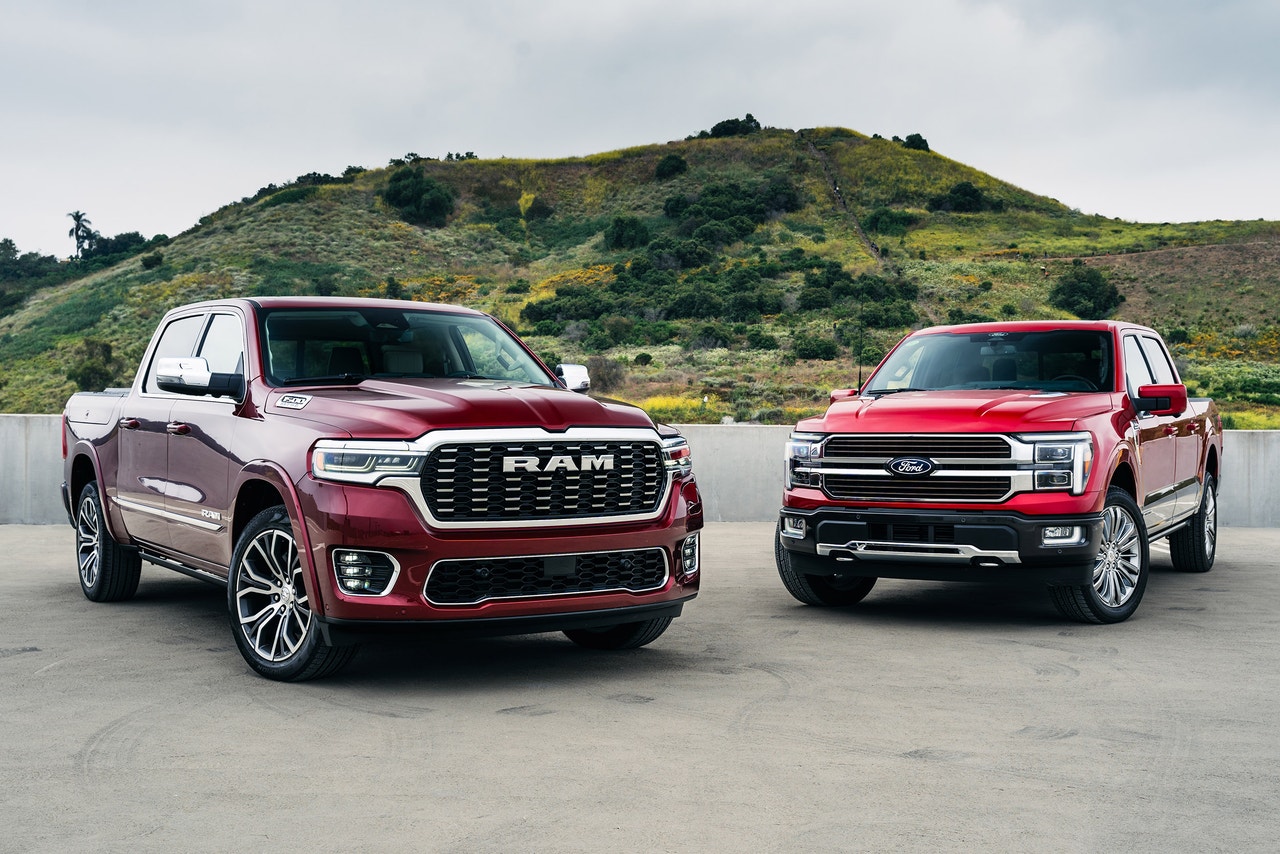
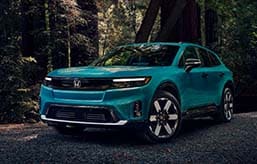



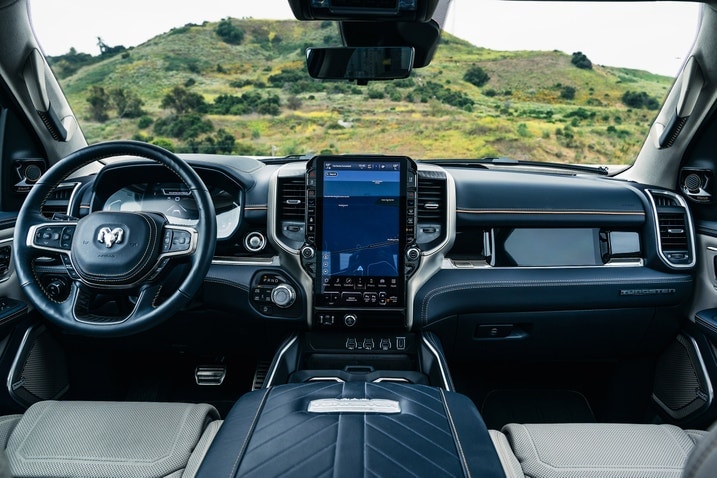
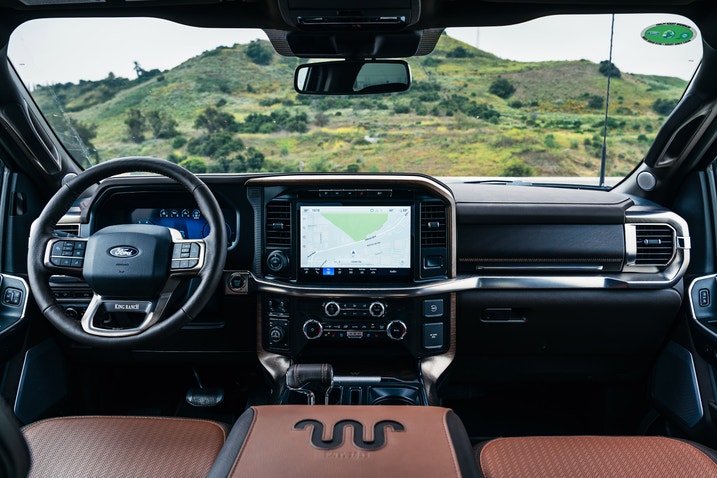
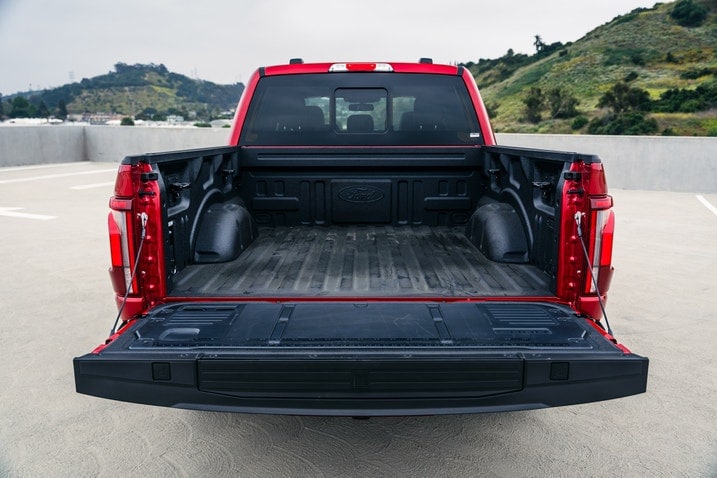
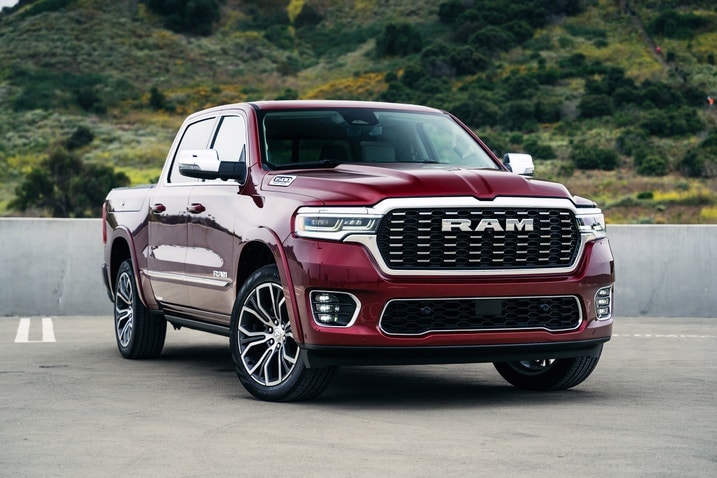
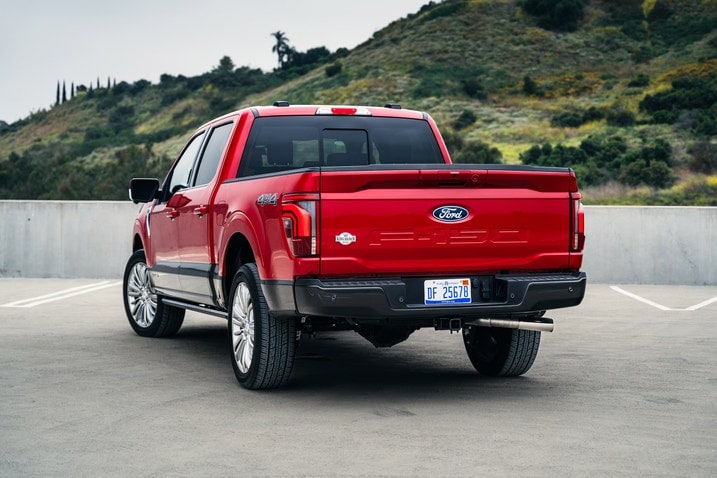
 by
by  edited by
edited by